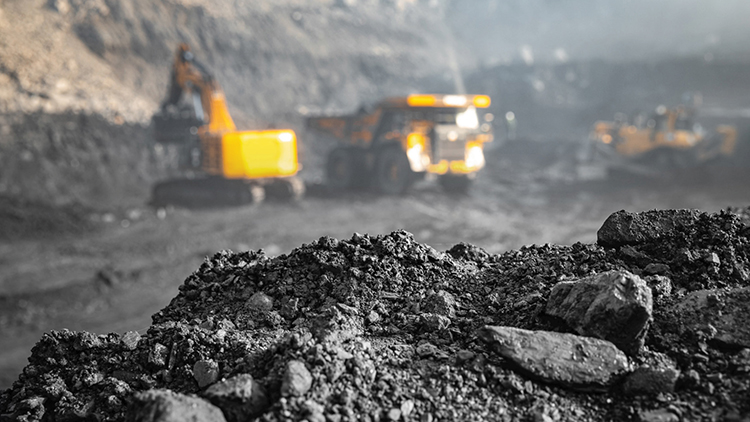In the 21st century, controlling the supply of critical minerals has become crucially important. These minerals, including cobalt, lithium, rare earth elements (REEs), tungsten, nickel, and others, are essential for modern defence systems, clean energy technologies, and consumer electronics.
Critical minerals are the backbone of both your daily gadgets and national security systems. Without them, batteries won’t store energy, fighter jets won’t fly, and communication networks won’t run. However, their supply chains are concentrated, fragile, and increasingly wrapped in geopolitical conflicts. Understanding their role and the global networks that govern their flow is critical for both economic power and national security.
The Importance of Oil vs Critical Minerals
For decades, oil was the most popular resource, playing a vital role in wars, alliances, and economies. Today, it is being replaced by critical minerals. Electric vehicles use about six times more mineral inputs than traditional cars. A single wind turbine can require over 200 kilograms of rare earth elements. Modern fighter jets need dozens of rare minerals for sensors, alloys, and guidance systems.
Therefore, it is safe to say that all modern technology relies on minerals, and in their absence, you will not be able to use today’s advanced technologies.
Uses of Critical Minerals in Tech and Defence
Critical minerals are economically vital, have limited alternatives, and face potential supply risks. For the technology and defence sectors, these minerals are vital inputs for advanced hardware.
Defence applications
Rare earth elements such as neodymium and samarium are used in permanent magnets for precision-guided missiles, fighter jet engines, and radar systems. Tungsten is essential for armour-piercing munitions. Titanium provides lightweight but strong materials for submarines and aircraft. Without these minerals, modern military superiority would be compromised.Technology applications
Lithium, cobalt, and nickel are critical for rechargeable batteries in electric vehicles (EVs), drones, and satellites. Gallium and germanium, by-products of base metals, are used in semiconductors and high-frequency communications, essential for both consumer 5G networks and defence-grade secure communications.
The dual-use nature of these minerals, powering both civilian and military technology, makes them strategically significant.
Challenges Faced by the Global Supply Chain of Critical Minerals
The global supply chain for critical minerals faces multiple challenges, making it fragile and geopolitically sensitive.
1. Concentrated production
While mining occurs in several countries, refining and processing are dominated by a few, especially China, which refines 68% of the world’s cobalt, 60% of the lithium of the grade required for electric vehicle batteries, and 65% of cobalt. This creates geopolitical dependency.
2. Political instability
Global supply chains are vulnerable to geopolitical events, trade conflicts, and potential weaponisation of resources by dominant players like the Democratic Republic of Congo, which supplies over two-thirds of global cobalt. This can create critical dependencies for nations relying on imports.
3. Rising global demand
Surging demand from electric vehicles, renewable energy, and consumer electronics intensifies competition. In countries like India and the US, dependence on imports creates strategic vulnerabilities, affecting national security and the ability to achieve goals in defence, technology, and clean energy.
The Impact of Disrupted Supply Chains on the Defence and Tech
Sectors Defence industries rely on highly specific mineral grades. Guidance systems, stealth technology, and satellite communications depend on rare earth magnets and speciality alloys. A shortfall can leave defence manufacturers unable to deliver, creating vulnerabilities in national security. That’s why the US, EU, Japan, and India are all funding stockpiles and domestic projects to cut dependency.
The geopolitics of minerals don’t just affect defence analysts; they touch everyday lives as well. Supply disruptions can make smartphones pricier, delay EV deliveries, or slow climate goals.
Efforts to Secure Supply Chains
Governments and industries are pursuing multiple strategies to reduce vulnerabilities and ensure a resilient supply.
1. Diversification of Sources
Nations are investing in new mining projects in countries like Australia, Canada, and African states beyond the Democratic Republic of Congo. For example, the US has partnered with Australia to expand rare earth and lithium production.
2. Onshoring and Friend-shoring
Efforts are underway to relocate parts of the refining and processing stages from China to allied countries. The US Inflation Reduction Act (2022) and the EU’s Critical Raw Materials Act (2023) both provide incentives for local processing.
3. Recycling and Circular Economy
Recovering critical minerals from used electronics and retired batteries is gaining importance. Recycling can help reduce dependence on mining and stabilise supply in the long term.
4. Strategic Stockpiles
Much like oil reserves, some countries are building reserves of critical minerals to cushion against supply shocks.
5. Technological Substitution
Research is ongoing to find alternatives to scarce minerals, such as sodium-ion batteries that could reduce reliance on lithium and cobalt. These measures aim to reduce challenges and ensure that technology and defence production are not held hostage to supply chain disruptions.Conclusion
Critical minerals are crucial in defence systems and modern technology. From stealth aircraft to smartphones, their role is significant. However, their supply chains are deeply vulnerable due to concentration, geopolitical conflicts, and increasing demand. Securing these supply chains is not just an economic issue but a matter of national security and technological sovereignty.
In the coming years, nations that can ensure stable access to critical minerals through diversified supply, recycling, and international cooperation will be best positioned to maintain both economic strength and defence capabilities. As such, critical minerals are not just the building blocks of modern technology, but also of future geopolitical power.
Article by Gayatri Sarin

